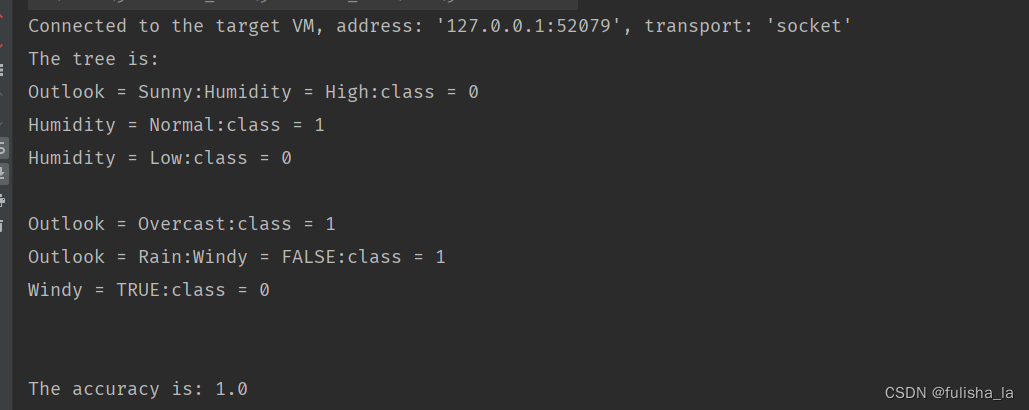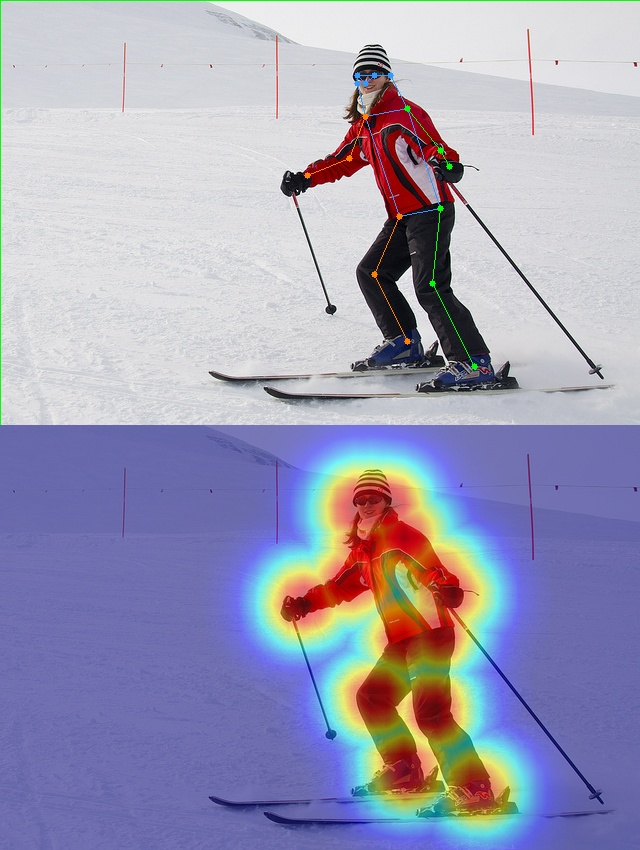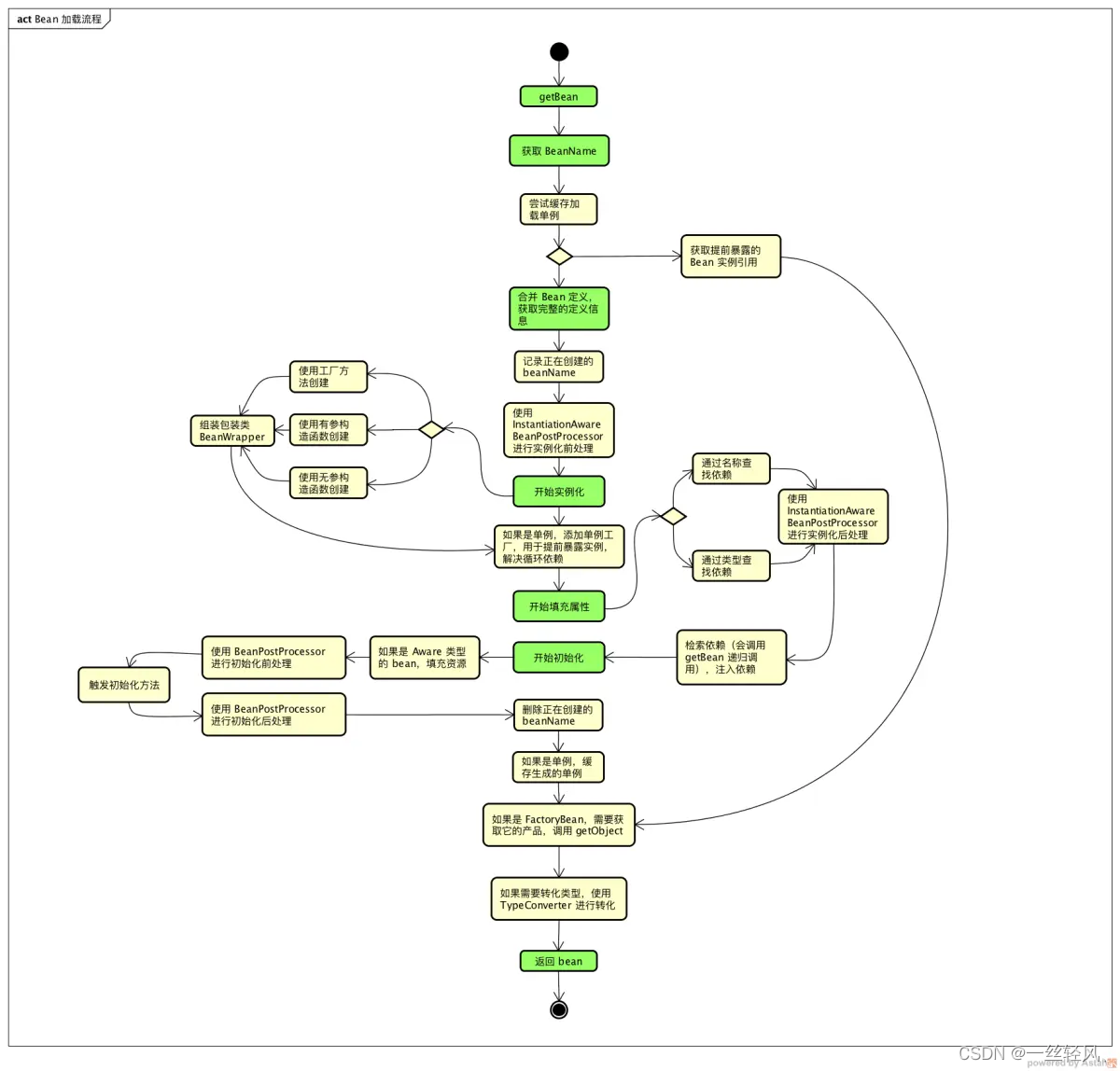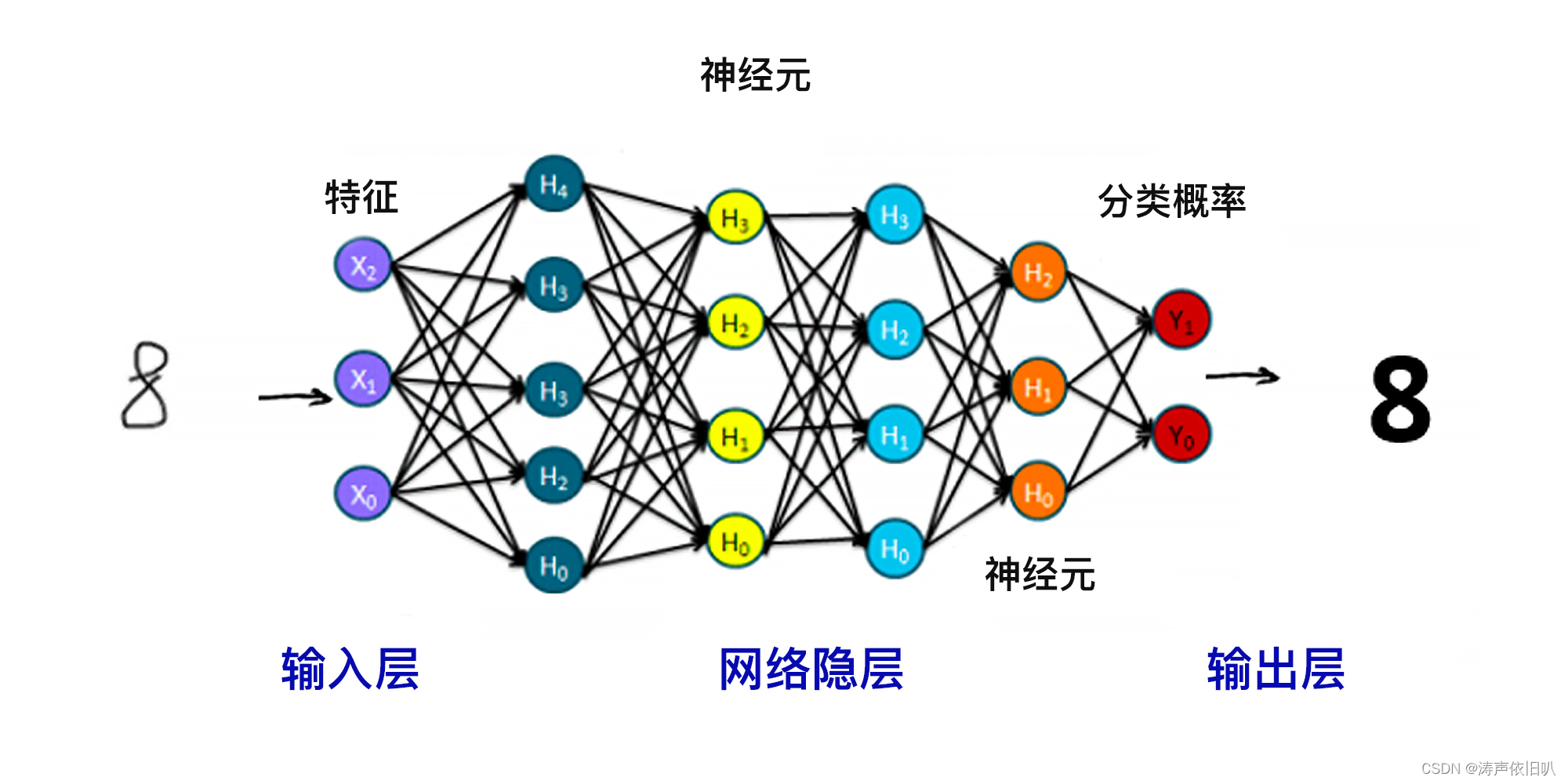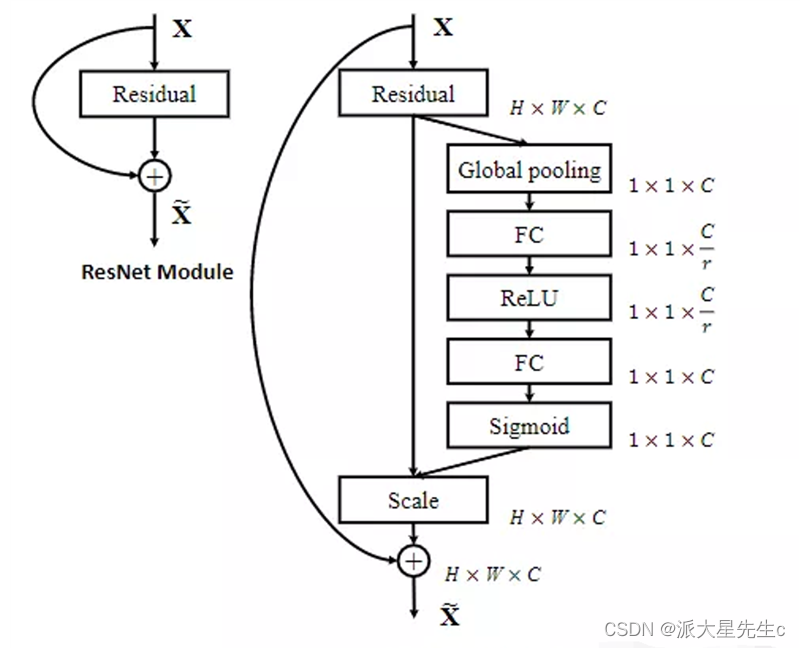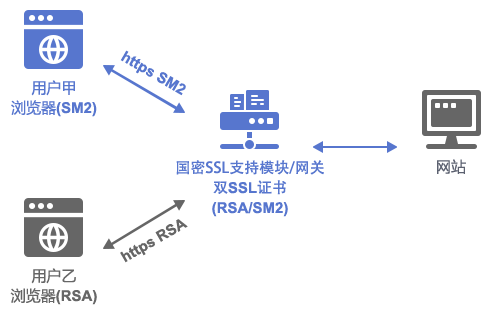文章目录
- 说明
- Day61 决策树
- 1.什么是决策树
- 2.什么是熵
- 3.什么是信息增益
- 4.详细例子
- 1. weather样本
- 2.第一次决策
- 3.第二次决策
- 4.最终决策树
- 4. 代码理解
- 4.1 变量理解
- 4.2 代码中主要方法理解
说明
闵老师的文章链接: 日撸 Java 三百行(总述)_minfanphd的博客-CSDN博客
自己也把手敲的代码放在了github上维护:https://github.com/fulisha-ok/sampledata
Day61 决策树
结合老师的文章去理解决策树中的一种决策算法:ID3算法
1.什么是决策树
决策树是一种基于树型结构的机器学习算法,叶子结点表示一个类别(即预测值),非叶结点表示特征。这篇文章构建决策树采用的是ID3算法,主要是根据信息增益(或条件信息熵)来划分特征。
2.什么是熵
在决策树中,熵是一种衡量数据集纯度或混乱度的指标。熵的值越高,表示数据集的混乱程度越高; 熵的值越低,表示数据集的纯度越高。(具体知识可网上查阅)
-
熵计算公式:
H ( X ) = − ∑ i n p ( x i ) l o g p ( x i ) H(X)=-\sum_{i}^{n}p(x_{i})logp(x_{i}) H(X)=−i∑np(xi)logp(xi) -
条件熵的计算公式
H ( Y ∣ X ) = − ∑ i n p ( x ) H ( Y ∣ X = x ) H(Y|X)=-\sum_{i}^{n}p(x)H(Y|X=x) H(Y∣X)=−i∑np(x)H(Y∣X=x)
3.什么是信息增益
熵是衡量数据集的不确定性的度量,而条件熵是在已知某个属性的条件下,数据集的不确定性。信息增益表示使用某个特征进行划分后,整个数据集的熵减少的程度,即通过划分所获得的信息量。信息增益越大,表示使用特征
A
A
A进行划分后,数据集的确定性更高, 特征A对训练数据集D的信息增益g(D, A) (具体知识可网上查阅)
g
(
D
,
A
)
=
H
(
D
)
−
H
(
D
∣
A
)
g(D, A) = H(D) - H(D|A)
g(D,A)=H(D)−H(D∣A)
4.详细例子
这个例子计算主要是结合了文章中的代码思路来的。
1. weather样本
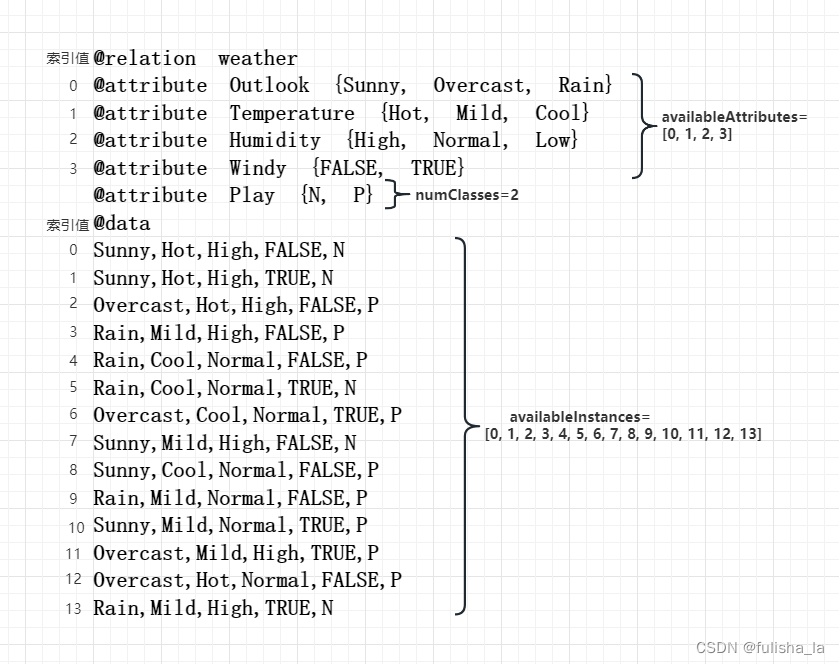
2.第一次决策
计算每个特征值的条件熵,筛选最优的特征作为根结点。
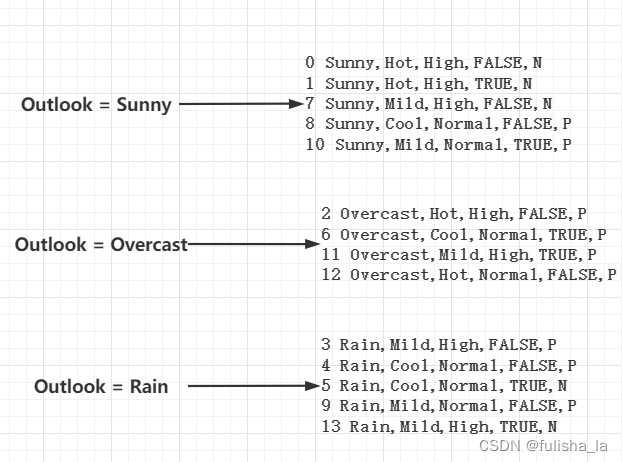
计算Outlook 他每个属性的熵:
H
(
p
l
a
y
∣
O
u
t
l
o
o
k
=
S
u
n
n
y
)
=
−
3
5
log
3
5
−
2
5
log
2
5
=
0.6730
H(play|Outlook = Sunny)=-\frac{3}{5}\log \frac{3}{5}-\frac{2}{5}\log \frac{2}{5}=0.6730
H(play∣Outlook=Sunny)=−53log53−52log52=0.6730
H
(
p
l
a
y
∣
O
u
t
l
o
o
k
=
O
v
e
r
c
a
s
t
)
=
−
0
log
0
−
1
log
1
=
0.0
H(play|Outlook = Overcast)=-0\log 0-1\log1=0.0
H(play∣Outlook=Overcast)=−0log0−1log1=0.0
H
(
p
l
a
y
∣
O
u
t
l
o
o
k
=
R
a
i
n
)
=
−
2
5
log
2
5
−
3
5
log
3
5
=
0.6730
H(play|Outlook = Rain)=-\frac{2}{5}\log \frac{2}{5}-\frac{3}{5}\log \frac{3}{5}=0.6730
H(play∣Outlook=Rain)=−52log52−53log53=0.6730
计算Outlook 的条件熵:
H
(
p
l
a
y
∣
O
u
t
l
o
o
k
)
=
−
5
14
∗
0.6730
−
4
14
∗
0.0
−
5
14
∗
0.6730
=
0.4807
H(play|Outlook)=-\frac{5}{14}*0.6730 -\frac{4}{14}*0.0-\frac{5}{14}*0.6730 = 0.4807
H(play∣Outlook)=−145∗0.6730−144∗0.0−145∗0.6730=0.4807
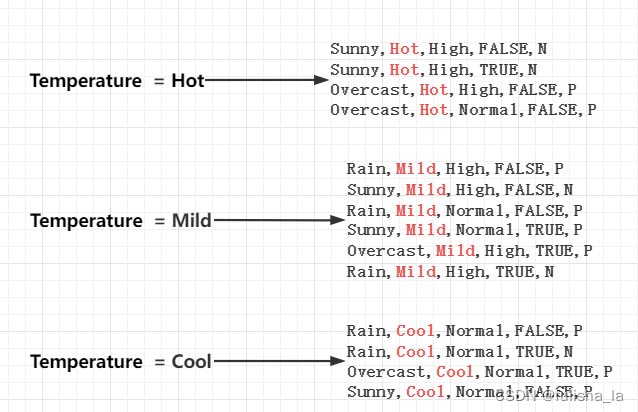
计算Temperature他每个属性的熵:
H
(
p
l
a
y
∣
T
e
m
p
e
r
a
t
u
r
e
=
H
o
t
)
=
−
2
4
log
2
4
−
2
4
log
2
4
=
0.6931
H(play|Temperature= Hot)=-\frac{2}{4}\log \frac{2}{4}-\frac{2}{4}\log \frac{2}{4}=0.6931
H(play∣Temperature=Hot)=−42log42−42log42=0.6931
H
(
p
l
a
y
∣
T
e
m
p
e
r
a
t
u
r
e
=
M
i
l
d
)
=
−
2
6
log
2
6
−
4
6
log
4
6
=
0.6365
H(play|Temperature= Mild)=-\frac{2}{6}\log \frac{2}{6}-\frac{4}{6}\log \frac{4}{6}=0.6365
H(play∣Temperature=Mild)=−62log62−64log64=0.6365
H
(
p
l
a
y
∣
T
e
m
p
e
r
a
t
u
r
e
=
C
o
o
l
)
=
−
1
4
log
1
4
−
3
4
log
3
4
=
0.5623
H(play|Temperature= Cool)=-\frac{1}{4}\log \frac{1}{4}-\frac{3}{4}\log \frac{3}{4}=0.5623
H(play∣Temperature=Cool)=−41log41−43log43=0.5623
计算Temperature的条件熵:
H
(
p
l
a
y
∣
T
e
m
p
e
r
a
t
u
r
e
)
=
−
4
14
∗
0.6730
−
6
14
∗
0.0
−
4
14
∗
0.6730
=
0.6315
H(play|Temperature)=-\frac{4}{14}*0.6730 -\frac{6}{14}*0.0-\frac{4}{14}*0.6730 = 0.6315
H(play∣Temperature)=−144∗0.6730−146∗0.0−144∗0.6730=0.6315
同理可得Humidity和Windy的条件熵:
H
(
p
l
a
y
∣
H
u
m
i
d
i
t
y
)
=
0.5465
H(play|Humidity)=0.5465
H(play∣Humidity)=0.5465
H
(
p
l
a
y
∣
W
i
n
d
y
)
=
0.6183
H(play|Windy)=0.6183
H(play∣Windy)=0.6183
所以在第一轮的决策中,我们根据最大化信息增益, 与最小化条件信息熵,选择条件熵最小的Outlook作为决策的根结点进行分裂。

3.第二次决策
我们在第一次决策后,分了三个分支,他的子问题和原问题一样的,又进行递归建树。
-
Outlook-Sunny结点
- Temperature
H ( p l a y ∣ T e m p e r a t u r e = H o t ) = − 0 log 0 − 1 log 1 = 0.0 H(play|Temperature= Hot)=-0\log 0-1\log 1=0.0 H(play∣Temperature=Hot)=−0log0−1log1=0.0
H ( p l a y ∣ T e m p e r a t u r e = M i l d ) = − 1 2 log 1 2 − 1 2 log 1 2 = 0.6931 H(play|Temperature= Mild)=-\frac{1}{2}\log \frac{1}{2}-\frac{1}{2}\log \frac{1}{2}=0.6931 H(play∣Temperature=Mild)=−21log21−21log21=0.6931
H ( p l a y ∣ T e m p e r a t u r e = C o o l ) = − 0 log 0 − 1 log 1 = 0.0 H(play|Temperature= Cool)=-0\log 0-1\log 1=0.0 H(play∣Temperature=Cool)=−0log0−1log1=0.0
H ( p l a y ∣ T e m p e r a t u r e ) = − 2 5 ∗ 0.0 − 2 5 ∗ 0.6931 − 1 5 ∗ 0.0 = 0.2772 H(play|Temperature)=-\frac{2}{5}*0.0 -\frac{2}{5}*0.6931-\frac{1}{5}*0.0 = 0.2772 H(play∣Temperature)=−52∗0.0−52∗0.6931−51∗0.0=0.2772 - Humidity
H ( p l a y ∣ H u m i d i t y ) = 0.0 H(play|Humidity)=0.0 H(play∣Humidity)=0.0 - Windy
H ( p l a y ∣ W i n d y ) = 0.6591 H(play|Windy)=0.6591 H(play∣Windy)=0.6591
选择条件熵最小的Humidity作为决策进行分裂,然后再往里面递归
- Temperature
-
Outlook-Overcast结点
在Overcast结点熵所有的play都是P,说明他的数据很纯,不用分裂了。 -
Outlook-Rain结点同理可得。
至于进一步的递归如上面一样
4.最终决策树
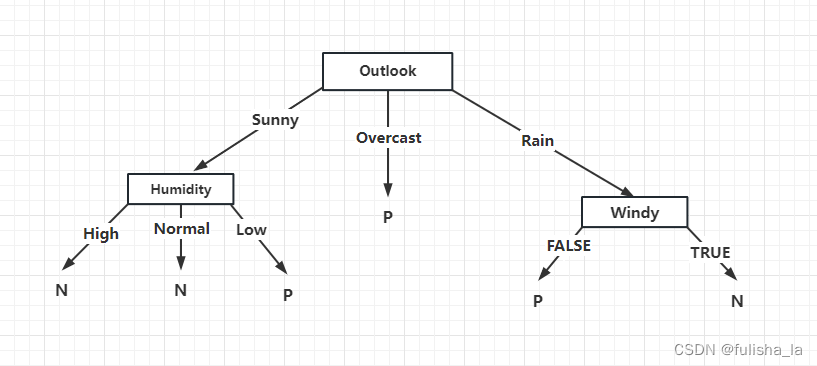
4. 代码理解
4.1 变量理解
在代码的实现中,很多存储都是利用的数据存储的索引,而不是存具体的数据,这样不仅减少空间开销,还减小了逻辑的复杂度。
- numClasses; availableInstances; availableAttributes
通过这张图就基本可以理解这三个变量主要存储的值是那些
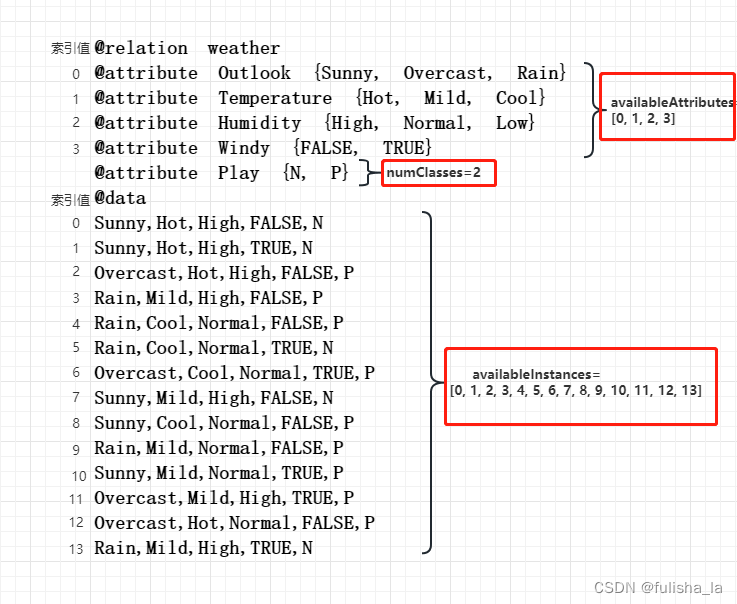
- splitAttribute,ID3[] children
即每次建树时,选择那个特征值作为来进行划分子集。例如splitAttribute=0,代表选择Outlook来划分子集
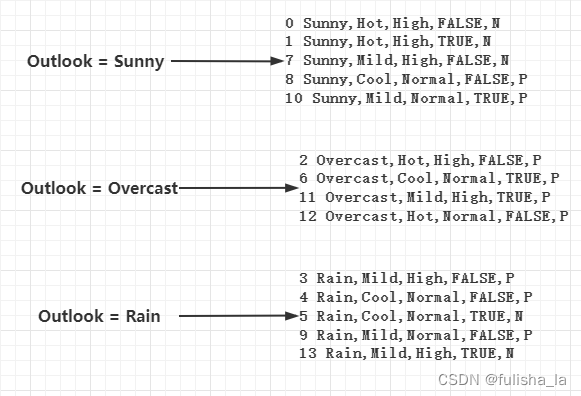
- label
基于规定的数据集,判断数据集中出现类别最多的值赋值给lable。
如下规定的5个数据集中,N出现最多则label赋值为N的索引值。

4.2 代码中主要方法理解
如果能自己去手动模拟一次,代码就很好理解。如果去计算过一遍在ID3算法中,buildTree()方法是算法核心。
public void buildTree() {
//判断实例索引
if (pureJudge(availableInstances)) {
return;
}
if (availableInstances.length <= smallBlockThreshold) {
return;
}
//划分孩子
selectBestAttribute();
int[][] tempSubBlocks = splitData(splitAttribute);
children = new ID3[tempSubBlocks.length];
// Construct the remaining attribute set.
int[] tempRemainingAttributes = new int[availableAttributes.length - 1];
for (int i = 0; i < availableAttributes.length; i++) {
if (availableAttributes[i] < splitAttribute) {
tempRemainingAttributes[i] = availableAttributes[i];
} else if (availableAttributes[i] > splitAttribute) {
tempRemainingAttributes[i - 1] = availableAttributes[i];
}
}
// Construct children.
for (int i = 0; i < children.length; i++) {
if ((tempSubBlocks[i] == null) || (tempSubBlocks[i].length == 0)) {
children[i] = null;
continue;
} else {
// System.out.println("Building children #" + i + " with
// instances " + Arrays.toString(tempSubBlocks[i]));
children[i] = new ID3(dataset, tempSubBlocks[i], tempRemainingAttributes);
// Important code: do this recursively
children[i].buildTree();
}
}
}
- 调用pureJudge方法 判断他们的类别是否够纯,若类别都是一样的,则直接返回;反之跳过。
例如availableInstances目前传入的是weather样本中14个实例,很明显play有N,有P,直接跳过。

- 判断我们在建树的实例是否小于smallBlockThreshold,若小于这个树,划分出来的结果不一定好,反而会适得其反。(避免过拟合)
- 调用selectBestAttribute方法。这个方法就是在每次建树时选择(可选的特征值中熵最小的)。conditionalEntropy方法就是计算每个特征值的条件信息熵,具体的算法就是上面的公式。(我觉得这个方法是核心)
- 调用splitData方法。根据选择最小的特征值作为根结点划分子集。
- buildTree方法中第一个for循环是去掉已经被选择的特征值
- buildTree方法中第二个for循环是开始递归建树啦,在递归时构建ID3对象时,我们可以当作是要重新构建一颗新(子)树,传参方式有变化,是因为paraAvailableInstances, paraAvailableAttributes我们设置为成员变量,他的作用域是整个类都可用,如不更新则会导致数据出错。
/**
* Select the best attribute.
* @return The best attribute index.
*/
public int selectBestAttribute() {
splitAttribute = -1;
double tempMinimalEntropy = 10000;
double tempEntropy;
//循环遍历每个特征值,计算其条件熵
for (int i = 0; i < availableAttributes.length; i++) {
tempEntropy = conditionalEntropy(availableAttributes[i]);
if (tempMinimalEntropy > tempEntropy) {
tempMinimalEntropy = tempEntropy;
splitAttribute = availableAttributes[i];
}
}
return splitAttribute;
}
/**
* Compute the conditional entropy of an attribute.
* @param paraAttribute The given attribute
* @return The entropy.
*/
public double conditionalEntropy(int paraAttribute) {
// Step 1. Statistics.
int tempNumClasses = dataset.numClasses();
int tempNumValues = dataset.attribute(paraAttribute).numValues();
int tempNumInstances = availableInstances.length;
double[] tempValueCounts = new double[tempNumValues];
double[][] tempCountMatrix = new double[tempNumValues][tempNumClasses];
int tempClass, tempValue;
for (int i = 0; i < tempNumInstances; i++) {
tempClass = (int) dataset.instance(availableInstances[i]).classValue();
tempValue = (int) dataset.instance(availableInstances[i]).value(paraAttribute);
tempValueCounts[tempValue]++;
tempCountMatrix[tempValue][tempClass]++;
}
// Step 2.
double resultEntropy = 0;
double tempEntropy, tempFraction;
for (int i = 0; i < tempNumValues; i++) {
if (tempValueCounts[i] == 0) {
continue;
}
tempEntropy = 0;
for (int j = 0; j < tempNumClasses; j++) {
tempFraction = tempCountMatrix[i][j] / tempValueCounts[i];
if (tempFraction == 0) {
continue;
}
double entropy = -tempFraction * Math.log(tempFraction);
tempEntropy += entropy;
}
double resultEntropyTest = tempValueCounts[i] / tempNumInstances * tempEntropy;
resultEntropy += resultEntropyTest;
}
return resultEntropy;
}
运行结果:
